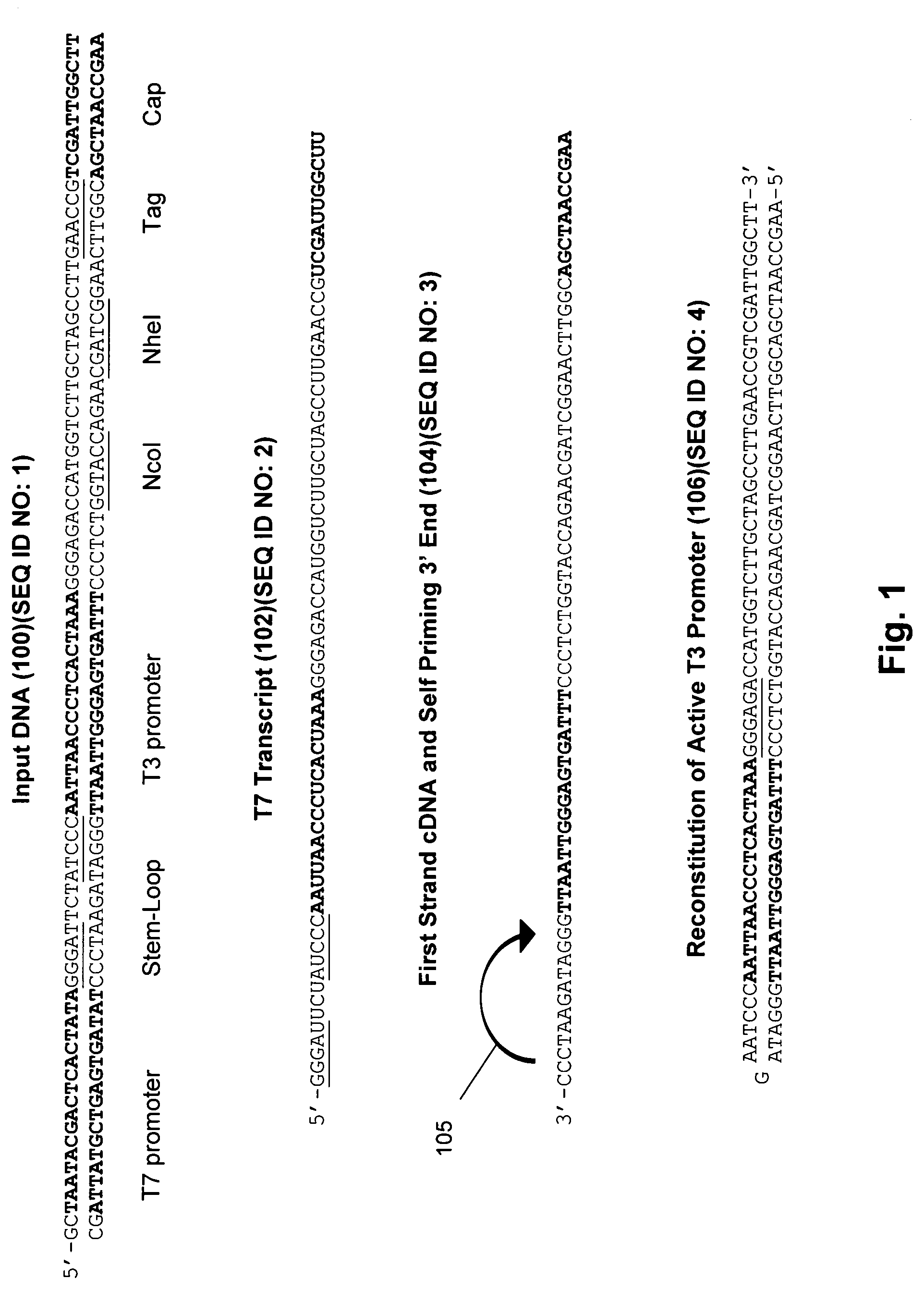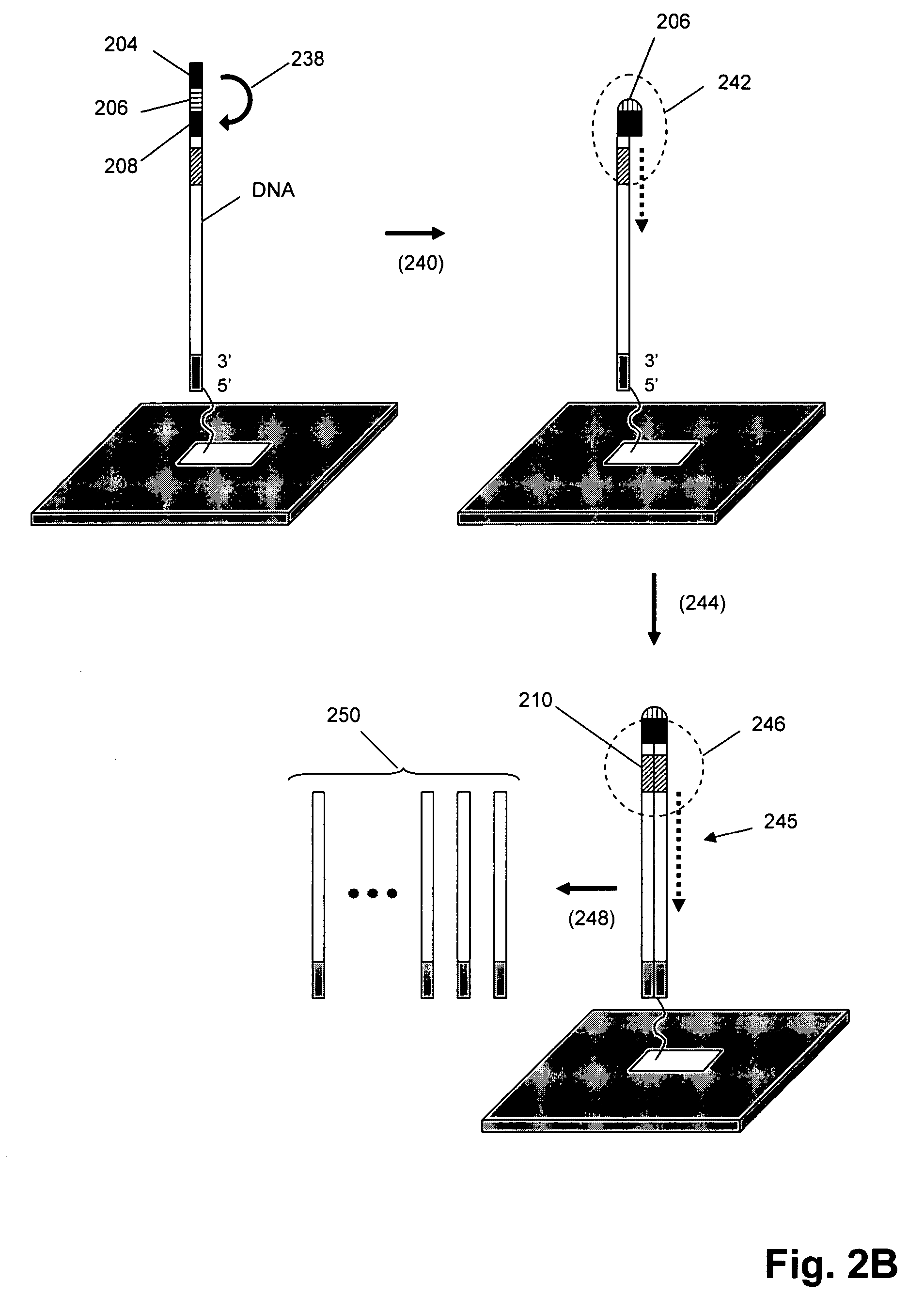Isothermal DNA amplification
a polynucleotide and isothermal technology, applied in the field of amplifying polynucleotides, can solve problems such as bias introduction, and achieve the effects of reducing amplification bias, accurate priming and speed
- Summary
- Abstract
- Description
- Claims
- Application Information
AI Technical Summary
Benefits of technology
Problems solved by technology
Method used
Image
Examples
example 1
Solid Phase Capture and Amplification
[0044]In this example, T7 RNA polymerase copies a template DNA to form RNA transcripts, which are captured by a unique primer and then utilized as templates to synthesize the first stranded complementary DNAs. This first strand DNA flips back at the 3′ terminus to provide entry point for self-polymerization, because the 3′ terminus has complementary sequence to form loop and stem structure. A T3 RNA polymerase promoter in the sequence is then reconstituted after self-polymerization. After the first in vitro transcription-reverse transcriptase (IVT-RT) mediated amplification reaction, the looped double stranded DNA serves as template in the second IVT-RT reaction to transcribe more RNA. In this embodiment, RNA is removed from the heteroduplex prior to the self-priming reaction by denaturation (i.e. in alkaline conditions or rising the temperature). Once the 3′ end of cDNA is exposed as single stranded, looped double stranded DNA is synthesized on ...
example 2
Amplification with a Single RNA Polymerase
[0062]In this example, a hairpin adaptor containing a single promoter site was ligated to an end of the polynucleotide to be amplified (thereby forming an augmented sequence). The promoter was oriented in the hairpin adaptor so that transcription takes place in the direction of the loop, thereby creating transcripts containing a copy of the loop, a single strand of the promoter, and the polynucleotide. The sequence of the hairpin adaptor (R6) is as follows (SEQ ID NO: 5):
[0063]
5′-pATCCCTTGCT[pT7]GGGAGACCCTATCTTAGGGTCTCCC[pT7′]AGCAAGG
where p is a phosphate group, [pT7] is the T7 promoter sequence, and [pT7′] is the complement of the T7 promoter sequence, the double underlined nucleotides are the loop region, and the first G of the single underlined nucleotides is the first copied nucleotide of a T7-generated transcript. After ligation, the augmented sequence was transcribed with T7 RNA polymerase under conventional reaction conditions to gene...
PUM
| Property | Measurement | Unit |
|---|---|---|
| Tm | aaaaa | aaaaa |
| pH | aaaaa | aaaaa |
| temperature | aaaaa | aaaaa |
Abstract
Description
Claims
Application Information
 Login to View More
Login to View More - R&D
- Intellectual Property
- Life Sciences
- Materials
- Tech Scout
- Unparalleled Data Quality
- Higher Quality Content
- 60% Fewer Hallucinations
Browse by: Latest US Patents, China's latest patents, Technical Efficacy Thesaurus, Application Domain, Technology Topic, Popular Technical Reports.
© 2025 PatSnap. All rights reserved.Legal|Privacy policy|Modern Slavery Act Transparency Statement|Sitemap|About US| Contact US: help@patsnap.com



